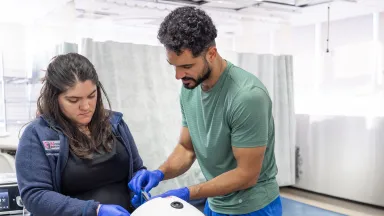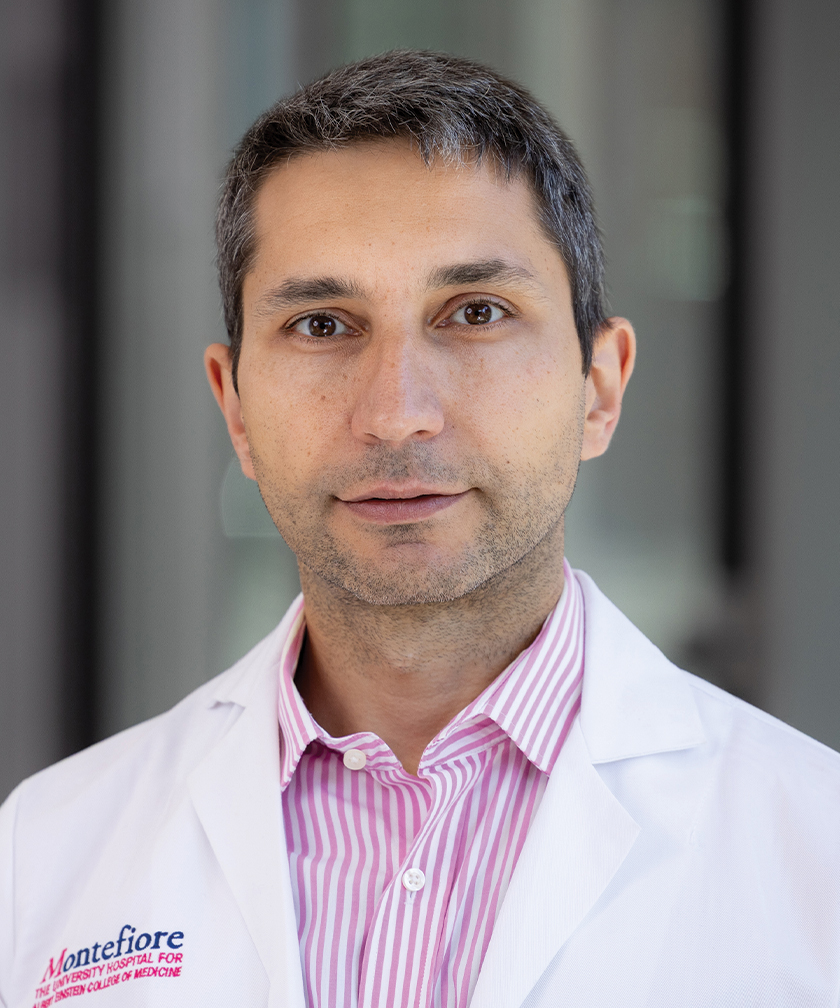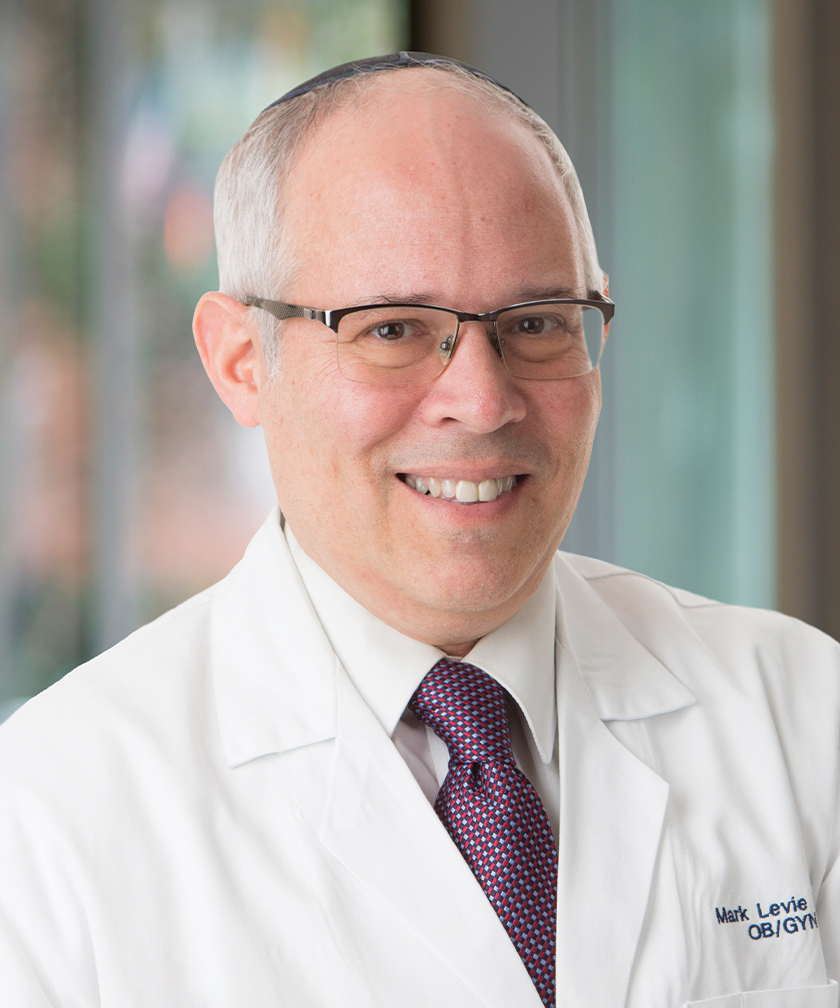Our Approach to Uterine Fibroids


The Montefiore Einstein Comprehensive Fibroid Center is one of the leading global destinations, providing comprehensive, personalized care for the full range of uterine fibroids (leiomyomas)—including all sizes, numbers, types and locations, from the common to the most complex and rare. Our multidisciplinary team of world-renowned gynecologists collaborates closely with experts in interventional radiology, reproductive endocrinology and infertility, maternal-fetal medicine, minimally invasive gynecologic surgery and other disciplines to deliver seamless, coordinated care. Our individualized approach is tailored to each patient’s unique needs, reproductive goals, fibroid characteristics, symptom severity and overall health. Whenever possible, we prioritize minimally invasive and robotic options, with a strong focus on preserving the uterus.We offer a full range of leading-edge treatments—from hormonal and nonhormonal medical therapy, uterine fibroid embolization and magnetic resonance-guided focused ultrasound(MRgFUS), to minimally invasive myomectomy, radiofrequency ablation (RFA) and hysterectomy.
We are an international referral center for the most complex cases, serving patients from across the country and around the world. Our fibroid specialists are leaders in the field and have unparalleled expertise in advanced minimally invasive techniques—including laparoscopic, hysteroscopic, vaginal and robot-assisted approaches—as well as open surgery when necessary. We use small or no incisions to minimize pain, promote faster recovery and preserve fertility whenever clinically indicated. We listen closely to each patient and emphasize shared decision-making—empowering individuals to make informed choices aligned with their health goals, beliefs, family planning needs and lifestyle. From initial diagnosis to advanced surgical management, we are committed to minimizing symptoms, optimizing fertility and improving quality of life for every patient.
Setting the Standard in Fibroid Treatment
We offer the latest fertility-sparing innovations for women seeking to preserve fertility and optimize reproductive outcomes. Our fibroid specialists utilize advanced minimally invasive techniques, including hysteroscopic, laparoscopic and robot-assisted myomectomy, as well as ultrasound-guided RFA—transcervical fibroid ablation (Sonata®) and laparoscopic RFA (Acessa®)—to remove fibroids while preserving the integrity of the uterus. We also offer medical therapies and noninvasive procedures, including uterine artery embolization and MRI-guided focused ultrasound, for select candidates. Every treatment plan is carefully individualized, balancing effective fibroid management with fertility goals to achieve the best possible reproductive outcomes.

Advanced Diagnostics & Treatments
We offer access to the latest diagnostics and treatments for the prevention, early detection and management of the full range of uterine fibroids and associated conditions such as adenomyosis.
Our Center provides the most advanced imaging technologies to accurately identify and evaluate uterine fibroids. We offer 3D and 4D transvaginal and transabdominal pelvic ultrasound, high-resolution 3T MRI and saline infusion sonohysterography (SIS) for detailed uterine evaluation. When direct visualization is needed, we perform advanced hysteroscopy, enabling real-time assessment of the uterine cavity with a high-definition miniature camera to accurately diagnose submucosal fibroids and guide treatment planning. For comprehensive preoperative planning, we employ 3D mapping and volumetric analysis using advanced MRI reconstruction techniques to precisely assess fibroid size, number and location—critical for tailoring individualized treatment strategies and optimizing surgical outcomes. Laboratory testing further informs individualized care planning and helps address associated conditions such as anemia and abnormal uterine bleeding.
Montefiore Einstein earned the prestigious Diagnostic Imaging Center of Excellence (DICOE) Designation from the American College of Radiology (ACR)—the highest level of achievement for medical imaging. We are also accredited by the American Institute of Ultrasound in Medicine (AIUM), demonstrating that we meet or exceed nationally recognized standards for the performance and interpretation of diagnostic obstetric and gynecologic ultrasound examinations—underscoring our commitment to clinical excellence and the highest quality of care.
Nonsurgical & Surgical Treatments
Our innovative treatments range from active surveillance and medical therapies to advanced minimally invasive procedures. For individuals with symptomatic fibroids, we offer a broad range of medical therapies aimed at reducing heavy menstrual bleeding, including nonsteroidal anti-inflammatory drugs (NSAIDs), tranexamic acid and hormonal contraceptives. In select cases, gonadotropin-releasing hormone (GnRH) agonists or selective progesterone receptor modulators (SPRMs) are used to control symptoms, either as a bridge to surgery or for women approaching menopause.
Our surgical expertise includes advanced minimally invasive approaches—including laparoscopic, hysteroscopic, vaginal and robot-assisted myomectomy (fibroid removal) techniques—using small or no incisions to minimize pain, accelerate recovery and preserve fertility whenever clinically indicated. When definitive treatment is necessary, we perform both open and minimally invasive hysterectomy approaches based on each patient’s unique needs. In select cases, we employ hybrid strategies, combining interventional radiology procedures with minimally invasive surgery to maximize symptom relief and optimize outcomes. Our team also leads in the design and implementation of enhanced recovery after surgery (ERAS) protocols to promote faster recovery, setting new standards in surgical fibroid care.
Our comprehensive suite of advanced diagnostics and treatments reflects the latest innovations in fibroid care, offering a full range of state-of-the-art options tailored to the unique needs of each patient. These include:
- 3D and 4D transvaginal and transabdominal pelvic ultrasound
- 3D mapping and volumetric analysis using MRI reconstruction for preoperative planning
- Diagnostic hysteroscopy for real-time, direct visualization of the uterine cavity with a high-definition miniature camera to diagnose submucosal fibroids and guide treatment
- Endometrial biopsy (for evaluation of abnormal uterine bleeding when clinically indicated)
- High-resolution 3T MRI
- In-office hysteroscopy
- Laboratory testing (e.g. lactate dehydrogenase—LDH isoenzymes, pregnancy test, thyroid function tests, complete blood count, iron studies)
- Saline infusion sonohysterography (SIS) for detailed uterine cavity evaluation
- Laparoscopic supracervical hysterectomy
- LESS hysterectomy
- Robot-assisted laparoscopic hysterectomy
- Total laparoscopic hysterectomy
- Vaginal hysterectomy
- vNOTES hysterectomy
- Aromatase inhibitors (e.g. letrozole)
- Gonadotropin-releasing hormone (GnRH) agonists
- Gonadotropin-releasing hormone (GnRH) antagonists (e.g. elagolix, relugolix)
- Hormonal contraceptives (e.g. oral contraceptives, patches, vaginal rings)
- Levonorgestrel-releasing intrauterine devices—IUDs (e.g. Mirena®) for reducing fibroid-related bleeding
- Nonsteroidal anti-inflammatory drugs (NSAIDs)
- Selective progesterone receptor modulators (SPRMs) (e.g. ulipristal acetate)
- Tranexamic acid
- Endometrial ablation (e.g. radiofrequency, cryoablation, thermal balloon) for select patients with small submucosal fibroids who have completed childbearing
- Magnetic resonance-guided focused ultrasound surgery (MRgFUS)
- Radiofrequency ablation (RFA)
- Laparoscopic radiofrequency ablation (Acessa® procedure)
- Transcervical fibroid ablation (Sonata® System)
- Ultrasound-guided high-intensity focused ultrasound (HIFU)
- Uterine artery embolization (UAE)
- Abdominal (open) myomectomy
- Hysteroscopic myomectomy (transcervical resection of fibroids)
- Laparoendoscopic single-site (LESS) myomectomy
- Laparoscopic myomectomy
- Robot-assisted laparoscopic myomectomy
- Vaginal natural orifice transluminal endoscopic surgery (vNOTES) myomectomy
Research & Clinical Trials
We are leading collaborative research and spearheading numerous studies and clinical trials, including several funded by the National Institutes of Health (NIH), translating novel scientific discoveries into new diagnostics and treatments to help improve clinical outcomes. Through our clinical trials, our patients can access emerging technologies and innovative treatments that may otherwise be unavailable to the general public.
Our research spans basic, translational and clinical science, with a focus on advancing the understanding and management of uterine fibroids. Areas of investigation include fertility-sparing management strategies for uterine fibroids and the continuous refinement and adaptation of patient decision aids—brief, evidence-based tools designed to facilitate shared decision-making in fibroid treatment.
We have also evaluated national contemporary treatment patterns among women diagnosed with symptomatic uterine fibroids in the United States, contributing valuable insights into current clinical practice. Recent investigations into pregnancy outcomes following direct uterine myoma thermal ablation further inform fertility preservation strategies and guide clinical decision-making. Additional research focuses on the direct costs incurred by women undergoing surgical procedures for fibroid management, and the role of preoperative MRI and LDH testing in optimizing surgical route selection for intra-abdominal fibroid surgery.
Our researchers are also exploring the clinical applications of emerging minimally invasive approaches, such as vNOTES, and developing novel surgical technologies and techniques to improve perioperative outcomes for uterine fibroids. Ongoing initiatives focus on the evaluation and implementation of ERAS protocols to optimize postoperative recovery and patient outcomes.
Further research examines advancements and updates in uterine artery embolization techniques for the management of leiomyomas, as well as the integration of surgical ergonomics education within minimally invasive gynecologic skills training—aimed at improving surgeon well-being and optimizing technical performance.

Care Navigation & Support Services
Whether you’re managing newly diagnosed fibroids, navigating complex or recurrent cases, or exploring fertility-sparing options—our world-renowned team at the Montefiore Einstein Fibroid Center is here to provide you with exceptional support, care and resources tailored to your needs.
Our full-service Center offers a comprehensive range of traditional and holistic care at every stage of life from screening, prevention and diagnosis through treatment and recovery, including social and support services, genetic counseling and education, care navigation, mental health and wellness services and other supportive programs. Our expansive breadth of resources enables us to deliver highly specialized and coordinated care that takes into account the whole person, addressing each individual’s complex medical needs to improve outcomes and promote, preserve and restore the reproductive and sexual health of women across every stage of life. Our team of compassionate and deeply knowledgeable doctors, nurses, specialists and support staff is dedicated to helping you at every step of your fibroid care journey.
Your Fibroid Care Team
Our multidisciplinary team of world-renowned gynecologists collaborates closely with experts in interventional radiology, reproductive endocrinology and infertility, maternal-fetal medicine and minimally invasive gynecologic surgery, specializing in the diagnosis and management of the full range of uterine fibroids. We use the most advanced nonsurgical and surgical techniques available to deliver comprehensive, personalized care that minimizes symptoms, optimizes fertility and improves quality of life for each patient.
About Uterine Fibroids
Uterine fibroids, also known as leiomyomas, are benign (noncancerous) tumors that develop from the smooth muscle cells of the uterus. They are among the most common gynecologic conditions, particularly in individuals of reproductive age, affecting up to 80% of women by age 50. While many fibroids are asymptomatic and require no intervention, others can cause significant symptoms. These may include heavy or prolonged menstrual bleeding and hemorrhaging that can lead to anemia (low blood counts), pelvic pressure or pain, menstrual cramps, urinary frequency, bowel dysfunction, pain during intercourse, infertility and pregnancy complications, including recurrent pregnancy loss and postpartum hemorrhage. Fibroids vary widely in size, number and location—ranging from small, nonpalpable nodules to large masses that distort the uterine cavity.














